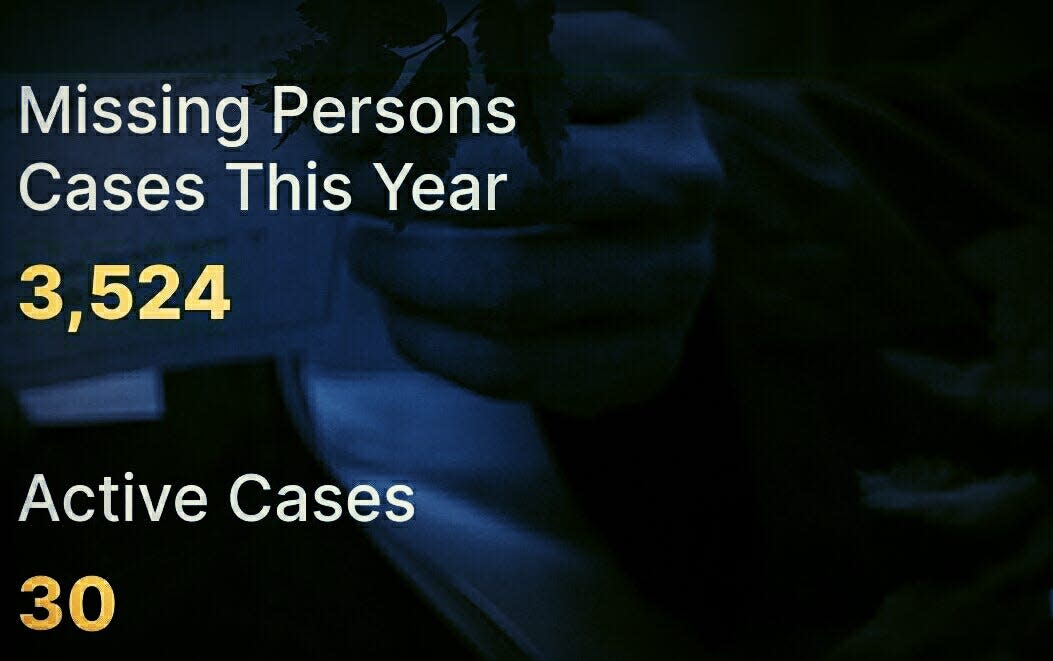Ashanti Alert? Blue Alert? The story behind NC’s lesser known missing person alerts

I know about Amber Alerts. We all do, or think we do.
They are part of a system used statewide and nationwide to alert a community when a child goes missing and in danger. There have been times I have been at a public event where everybody’s phone sounded with the alert at once.
But a recently, we got an Ashanti Alert that appeared on our screens. That was a new one for me. The alert went out for a woman missing in Harnett County.
More: Pitts: Can policing look different in Fayetteville? A Durham-based documentary sets the stage.
“The Ashanti Alert is more or less an Amber Alert for an adult,” explains Morrissa Ahl-Moyer, director of the N.C. Center for Missing Persons. The alert covers people 18 to 64. “When you have solid evidence that there has been an abduction, or they are being held against their will or are unable to leave due to the actions of someone else — that would be when the Ashanti Alert would come in.”
Apparently, I was not the only one unaware of this kind of alert.
More: Pitts: ‘They were coming up to us.’ Fayetteville police and faith team hope to reduce gun violence
Ahl-Moyer, who started her director's job in June of last year, says she may activate Amber Alerts every one to two months; she can only remember twice activating an Ashanti Alert.
“I do training for 911 dispatchers and law enforcement agencies, and they are not familiar with it — it’s like the Blue Alert.
“No one was familiar until we had one.”
When an officer is down
Had you heard of a Blue Alert?
I hadn’t.
The alert goes out when a law enforcement officer is injured, killed or missing and there is information on the suspect, says Ahl-Moyer.

Two alerts went out in the case of a Greensboro police sergeant who was shot and killed after he reportedly tried to stop a crime at a Sheetz gas station. Two alerts was not ideal but happened when the Ahl-Moyer's office hit a glitch activating a new kind of alert.
She is conscientious that alerts interrupt a person's day. But she adds that not all alerts push warning sounds to mobile devices.
“The only time those phones will go off is for Blue or Amber,” she says.
Law enforcement must make the request
Requests to active an Ashanti alert (or each or all of the alerts) must come from the law enforcement agency that reported the person missing, says Ahl-Moyer. Agencies use an online portal, which sends an email to her and several members of the N.C. Highway Patrol.
“Our policy is we never approve or deny an Amber Alert without talking to the agency,” she says. “We want to know where they’re at in their investigation. Are there resources we can offer? And that kind of thing.”
The decision to send a statewide alert ultimately rests with the director or a staff member on call in her place.
“We record the Emergency Alert System message,” she says, “then we transmit it to all of the partners, such as your radio networks, TV networks, things like that.”
The state’s wireless alerts are currently handled by the National Center for Missing and Exploited Children, she says. Those are the alerts we get on our phones, she says.
Who was Amber? Who was Ashanti?
I can remember the time before Amber Alerts. They strike me as early evidence of what we now call crowd-sourcing.
I thought when the alert system was first introduced what a powerful decision it was to name the life-saving system after a person. That humanizes the whole process and adds to the urgency, which is what the system is all about. Urgency.

Amber Hagerman was a 9-year-old girl in Arlington, Texas, who was out riding her pink bicycle when she went missing. Her body was found four days later. Her killer has not been caught.
Ashanti Billie was a 19-year-old art student and the daughter of two military veterans who was last seen alive in September 2017 entering a military base near Virginia Beach, Virginia, to work at her job at a sandwich shop. Her body was found 11 days later in Charlotte, North Carolina.
Her killer has been diagnosed with schizophrenia and has not been found competent to stand trial, which has vexed Billie’s family.
There is so much sadness and pain behind these alert names.
Do the alerts work?
Ahl-Moyer, who lives in Cary, succeeds longtime director Nona Best, who retired in 2023. Ahl-Moyer’s background includes working in communications for Troop C of the State Highway Patrol, where after-hours she would handle alerts for N.C. Missing Persons.
“They absolutely work,” she says about alerts. “They are sometimes quickly canceled. There are some times when it goes on for a bit, and there are times the agencies don’t know where the child is.”
The alerts lead to phone calls. Calls often continue to come in after the alert is canceled, she says, as happened in the Harnett County Ashanti Alert where people claimed, “I just saw the vehicle.”
“We welcome and appreciate those phone calls,” Ahl-Moyer says. “We would rather have 100 false calls and it not be the vehicle than to miss that one call where it actually is the vehicle.”
What gets an alert ‘every single time’
Silver Alerts and what they mean are also not as well-known. They cover older adults with cognitive issues that might go missing.
Last October, Ahl-Moyer says, Silver Alerts were folded into Missing Endangered Alerts, which apply to people of any age with a cognitive impairment who go missing.
Ahl-Moyer said when a child, who is cognitively impaired wanders off, it will lead to Missing Endangered Alert.
“That is one thing that fits absolutely very single time,” she says. “That is a slam-dunk for us. We absolutely we want to activate because time is of the essence when it comes to the younger children who wander.”

I speculate that Ahl-Moyer is one of those people who thinks about work in her spare time. She thinks about the system, which started at the federal level and how it connects agencies to find people. One example she likes in particular is the Nixle alerts that go out to various partners, including truckers.
“Which is brilliant for me because on the interstate, who’s going to have a better line of sight than those truck drivers?” she asks.
Opinion Editor Myron B. Pitts can be reached at mpitts@fayobserver.com or 910-486-3559.
This article originally appeared on The Fayetteville Observer: NC Ashanti Alerts: Another way to locate missing people. How they work

